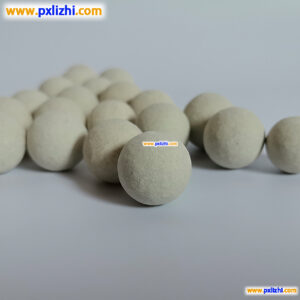
# Ceramic Ball Manufacturing Process and Applications
## Introduction to Ceramic Balls
Ceramic balls are high-performance spherical components made from advanced ceramic materials. These precision-engineered spheres offer exceptional properties that make them ideal for various industrial applications. The manufacturing process of ceramic balls requires strict quality control to ensure consistent size, roundness, and surface finish.
## Manufacturing Process of Ceramic Balls
### 1. Raw Material Preparation
The process begins with selecting high-purity ceramic powders, typically alumina (Al2O3), zirconia (ZrO2), silicon nitride (Si3N4), or silicon carbide (SiC). The raw materials are carefully measured and mixed with binders and additives to create a homogeneous mixture.
### 2. Forming Process
The mixed powder is then formed into spherical shapes using one of several methods:
– Dry pressing: Powder is compressed in spherical molds
– Isostatic pressing: Uniform pressure is applied from all directions
– Extrusion: Material is forced through dies and cut into spherical shapes
– Slip casting: Liquid ceramic slurry is poured into spherical molds
### 3. Pre-sintering (Bisque Firing)
The formed green balls undergo a low-temperature firing process to remove binders and develop initial strength. This step prepares the balls for final sintering while maintaining their shape.
### 4. Precision Grinding
After pre-sintering, the balls go through precision grinding to achieve:
– Tight dimensional tolerances (often within microns)
– Excellent sphericity (roundness)
– Smooth surface finish
– Consistent size distribution
### 5. Final Sintering
The balls are fired at high temperatures (typically 1400-1800°C depending on material) to achieve full density and desired mechanical properties. This step significantly increases the balls’ hardness and strength.
### 6. Quality Inspection
Each batch undergoes rigorous quality control checks including:
– Dimensional accuracy measurements
– Surface quality inspection
– Mechanical property testing
– Roundness verification
## Applications of Ceramic Balls
### 1. Bearing Applications
Ceramic balls are widely used in high-performance bearings due to their:
– Excellent wear resistance
– High stiffness
– Corrosion resistance
– Lightweight properties
– Ability to operate in extreme temperatures
### 2. Valve Components
In industrial valves, ceramic balls provide:
– Superior abrasion resistance
– Chemical inertness
– Long service life in harsh environments
– Reduced maintenance requirements
### 3. Grinding Media
Keyword: ceramic ball
Ceramic grinding balls are used in:
– Mining industry for ore processing
– Paint and pigment production
– Pharmaceutical manufacturing
– Food processing applications
### 4. Aerospace and Defense
Specialized ceramic balls are used in:
– Guidance systems
– High-speed rotating equipment
– Extreme environment applications
### 5. Medical Applications
In the medical field, ceramic balls are utilized for:
– Joint replacements (especially hip replacements)
– Dental implants
– Surgical instruments
## Advantages of Ceramic Balls
Ceramic balls offer numerous advantages over traditional metal balls:
- Higher hardness and wear resistance
- Lower density (lighter weight)
- Excellent corrosion resistance
- High temperature stability
- Electrical insulation properties
- Non-magnetic characteristics
- Longer service life in demanding applications
## Future Trends in Ceramic Ball Technology
The ceramic ball industry continues to evolve with advancements in:
- Nanostructured ceramic materials
- Improved manufacturing precision
- Hybrid ceramic-metal composites
- Smart ceramic materials with embedded sensors
- More sustainable production methods
As technology progresses, ceramic balls will likely find even more specialized applications across various industries, pushing